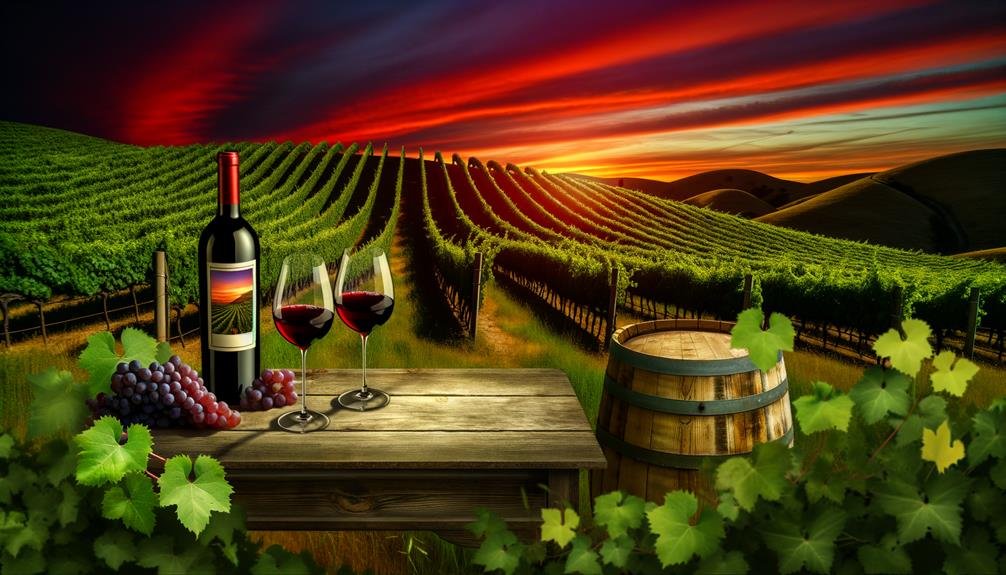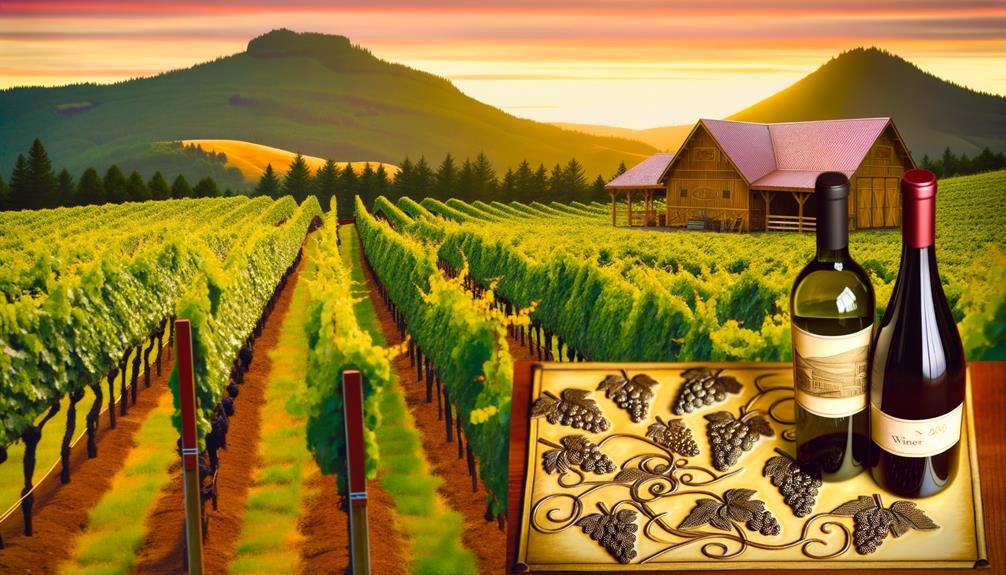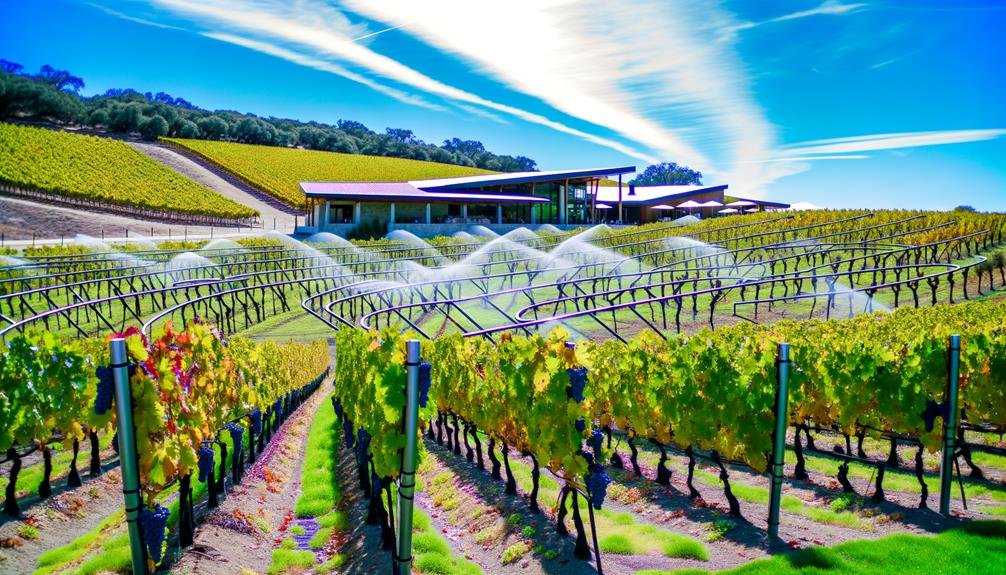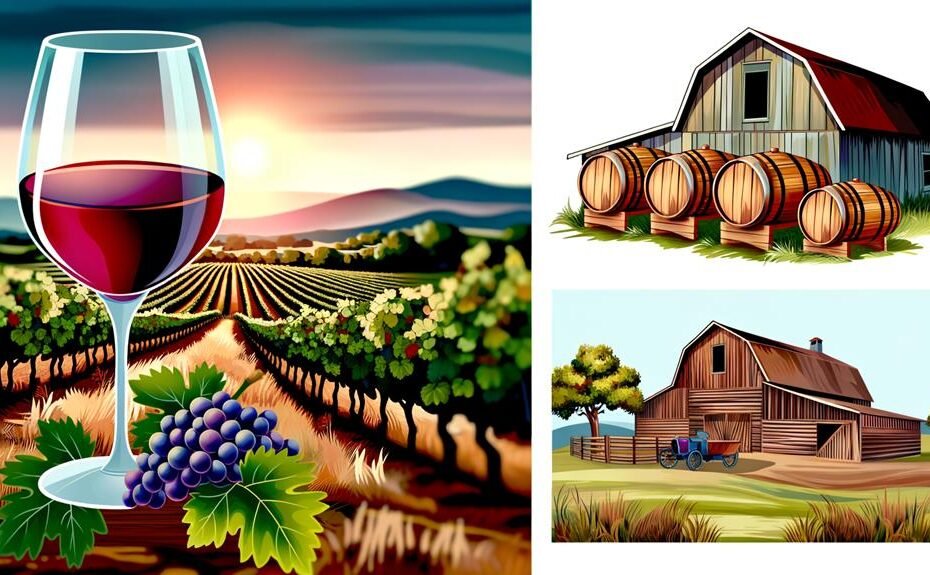American wine traditions in the United States are a unique blend of historical resilience and modern innovation, creating a captivating legacy that appeals to both wine enthusiasts and casual drinkers. Unlike European wine producers, American winemakers have embraced experimentation, resulting in distinct practices like the CMS blend and the use of American oak in red wines. This dedication to quality and diversity not only showcases the creativity of American vineyards but also sparks curiosity about what the future holds for the industry.
Looking ahead, it's fascinating to ponder the innovative techniques and traditional methods that will shape the next phase of American winemaking. Will we see new grape varietals being cultivated in different regions, or perhaps a resurgence of ancient winemaking practices? The possibilities are endless as winemakers continue to push boundaries and redefine what it means to produce exceptional wines in the United States.
One example of this forward-thinking approach is the rising popularity of sustainable and organic winemaking practices in California's wine country. Wineries like Frog's Leap in Napa Valley are leading the way by prioritizing environmental stewardship and producing high-quality wines that reflect their commitment to sustainability. By focusing on the health of the land and the well-being of future generations, these wineries are setting a new standard for excellence in the industry.
As American wine traditions evolve, it's exciting to witness the fusion of tradition and innovation that shapes the character of each bottle. Whether you're a seasoned wine connoisseur or just beginning to explore the world of wine, the diversity and creativity of American winemakers offer a delightful journey of discovery with every sip. Cheers to the rich tapestry of American wine traditions and the exciting future that lies ahead in every glass.
The CMS Blend

The CMS blend is a uniquely American take on European wine blending practices, combining Cabernet Sauvignon, Merlot, and Syrah to create a complex and balanced wine. Inspired by Bordeaux and Rhone regions, where blending is key for depth and flavor, American winemakers have put their own spin on it.
By adding Syrah, traditionally used in French wines, the CMS blend gains a touch of spiciness and depth that sets it apart. This adaptation showcases the creativity of American winemakers, offering a new and exciting experience for wine lovers.
The CMS blend harmoniously combines tradition and innovation, appealing to those who appreciate classic blends as well as those with more modern tastes.
American Oak in Red Wines
American oak is a key player in the aging process of rich, full-bodied red wines, infusing them with unique flavors that contribute to their distinctive character. In comparison to European oak, American oak stands out for its prominent notes of vanilla, coconut, and sweet spices, making it a great match for grape varieties like Zinfandel and Cabernet Sauvignon.
Moreover, winemakers often prefer American oak for its cost-effectiveness and lower environmental impact. American oak's coarser grain tightness allows for a quicker extraction of flavors, resulting in a faster aging process that imparts a robust taste profile to the wine.
On the other hand, European oak offers a more subtle blend of spice, toast, and nutty flavors, with a finer grain tightness that leads to a slower, more gradual aging impact. Overall, the versatility and distinct characteristics of American oak make it a popular choice in modern winemaking, enhancing the quality and complexity of red wines.
Truth-In-Labeling in Oregon

Oregon has set a high standard for truth-in-labeling in the wine industry, particularly with its stringent requirements for Pinot Noir and Chardonnay. Winemakers in the region must follow strict guidelines, ensuring that at least 90% of the grapes in these wines are of the specified varietal.
This commitment to transparency not only preserves the integrity of Oregon's wine but also helps consumers make informed choices. Oregon's dedication to clear labeling has influenced broader industry practices, promoting honesty and accuracy.
Petit Verdot and Petite Sirah
Petit Verdot and Petite Sirah have carved out a unique and flourishing place in California and Washington vineyards. Originally used as blending grapes in France, these varietals have thrived as standalone wines in the American market.
In California, the climate enhances Petit Verdot's robust tannins and deep color, making it an excellent choice for aging. On the other hand, Washington's cooler climate results in wines with balanced acidity and rich flavors, making it an ideal environment for these grapes. Petite Sirah, known for its intense color and bold structure, particularly excels in California's diverse terroirs.
Winemakers and consumers are increasingly drawn to these varietals for their innovative and complex characteristics. The distinct qualities of Petit Verdot and Petite Sirah add depth and diversity to wine selections, appealing to those seeking something different and exciting.
Whether it's the bold tannins of a well-aged Petit Verdot or the dark, inky richness of a Petite Sirah, these wines offer a unique experience that sets them apart in the ever-evolving world of wine.
Innovation in Grape Varieties

Randall Grahm is at the forefront of innovation in grape breeding, reshaping the American winemaking scene with his pioneering work at Popelouchum vineyard. His project focuses on creating new grape varieties specifically tailored to thrive in American terroirs, pushing the boundaries of traditional viticulture.
Taking inspiration from successful historical examples like Cabernet Sauvignon, Grahm employs natural mutations and selective breeding techniques to develop resilient, high-quality grape varieties capable of flourishing in various climates. This innovative approach not only enriches the diversity of American wines but also addresses the challenges brought by climate change.
As American winemakers embrace experimentation and innovation, the future of the industry appears vibrant and full of potential.
Conclusion
American wine traditions in the United States are a blend of Old World techniques and New World innovations, constantly progressing. From the skillful blending of the CMS mix to the unique use of American oak in red wines, and the strict standards for truth in labeling in Oregon, American winemaking showcases a dedication to excellence and variety.
Exploring grapes like Petit Verdot and Petite Sirah highlights the dynamic and inventive nature of American wines on the global platform. The fusion of traditional methods with modern approaches sets American wines apart, creating a diverse and high-quality selection that continues to captivate wine enthusiasts worldwide.
